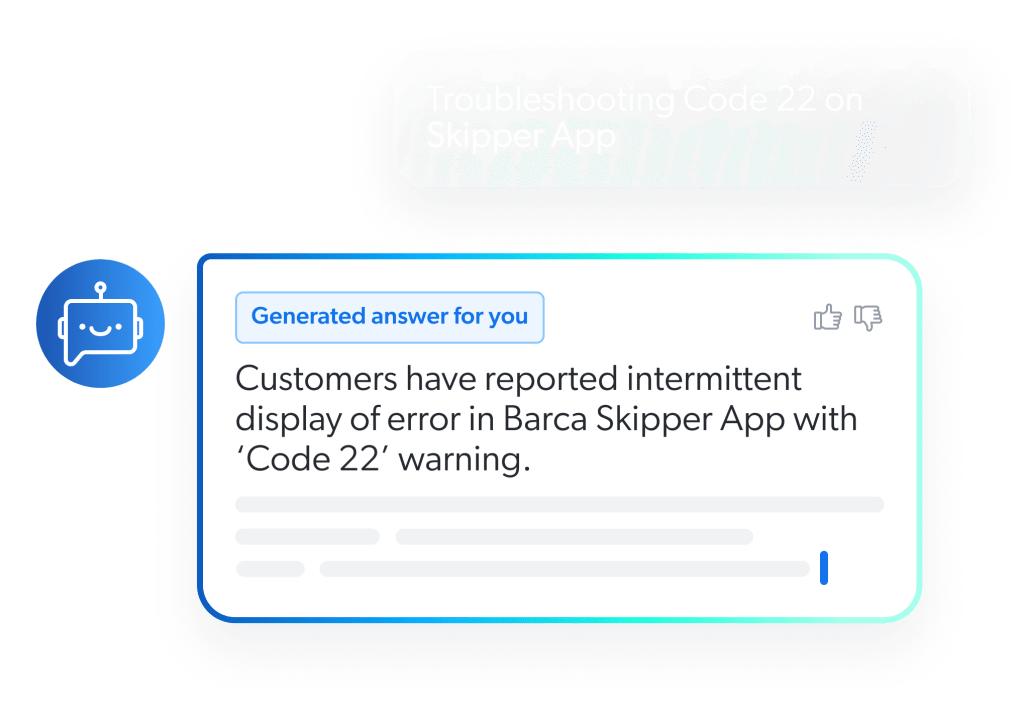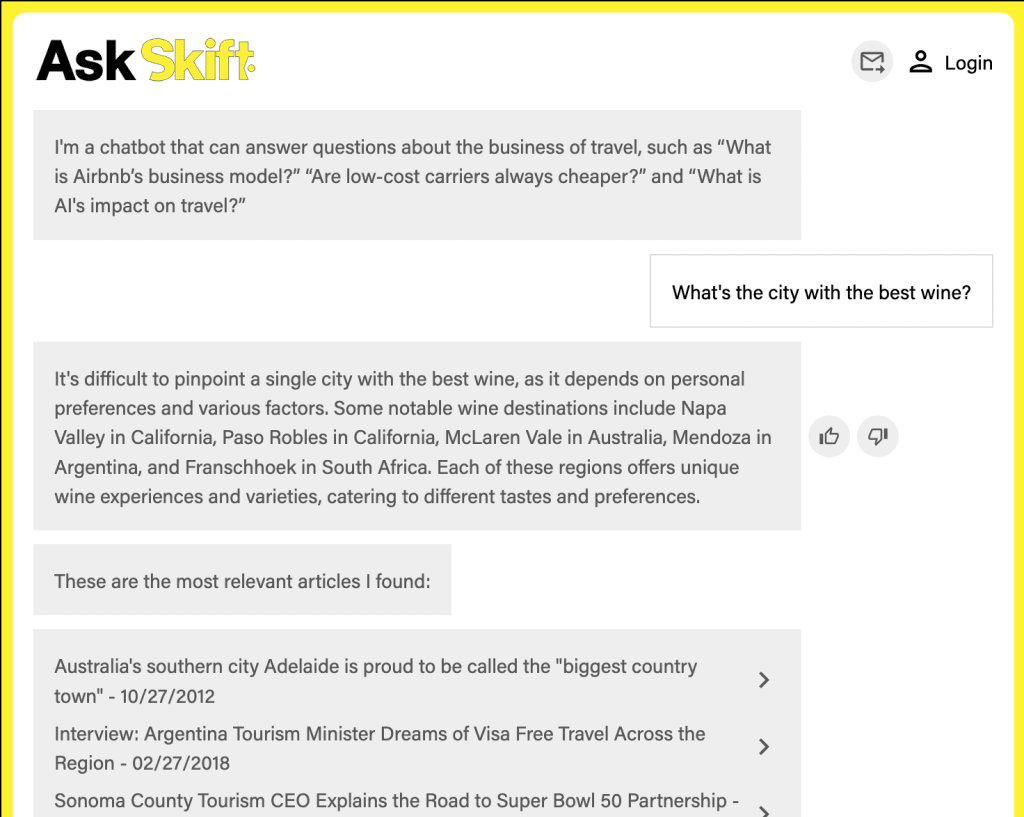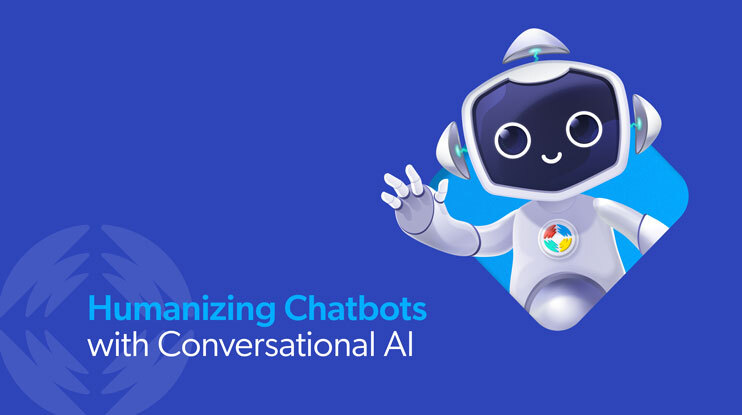From a business perspective, the promise of chatbot technology is undeniable. Let’s look at retail as an example. Chatbots can help retailers drive over $100 billion in sales by acting as virtual sales reps, upselling items and convincing shoppers not to abandon carts. To help post-transaction, chatbots can also facilitate guided support sessions that improve customer experience and user engagement.
That is, of course, if you can get shoppers to use them.
When surveyed consumers about their most recent service experience, less than 10% said they’d used a chatbot. Of those who did, only a quarter said they planned to use one again. Why? Their reluctance has a lot to do with the bots’ inability to move an issue forward or resolve a problem quickly.
Despite Service Leaders’ Growing Investment in Chatbots, Customer Adoption Remains Low
But it’s also about trust (or lack thereof). People want chatbots to feel authentic. That means giving your chatbot a distinct personality with human-like characteristics. Optimism, empathy, and creativity have been shown to increase consumer trust in chatbots.
What if your chatbot could do both, though? Not only be nice, upbeat, and original, but also help customers resolve issues or answer questions.
The Rise of Conversational AI & Chatbots
Changes in technology are accelerating the adoption of chatbots, promising huge gains in productivity and cost savings for industries like banking, healthcare, retail, and tech.
Advanced machine learning (ML) algorithms, natural language processing (NLP), and large language models (LLM) make tools like customer service chatbots incredibly useful. These bots understand complex language and can respond in a more human manner. for getting work done. LLMs are especially helpful for their ability to generate creative content in response to user queries.

The emergence of this groundbreaking technology coincided with the pandemic and the need for companies to pivot from in-person to digital solutions. Automated customer service like traditional chatbots helped handle a huge increase in online interactions and continues to be a popular way to automate and scale customer service capabilities. And now conversational AI, its own enormous market projected to exceed $43 billion in the next six years, can further enhance those capabilities.
LLMs are the backbone of state-of-the-art conversational AI. They are trained on almost unfathomably large amounts of text data, allowing them to understand context, generate human-like text, and create new content.
With conversational AI, businesses can:
- Automate customer service for common issues
- Augment live chat and provide instant 24/7 support
- Assist human agents by summarizing interactions and generating relevant responses from internal knowledge repositories
- Gain insights from customer conversations, interactions, and queries
Conversational AI also helps customers and users:
- Get instant answers and support when it’s convenient for them
- Ask questions, self-serve, and resolve issues on their own
- Avoid long hold times and frustrating phone menus
- Enjoy more relevant digital interactions and data-driven guidance
And yet, even with the tremendous gains in productivity and the incredible potential that conversational AI offers businesses and users, adding a basic chatbot to your website isn’t enough. A bad experience with conversational AI is worse than no experience.
Humanizing chatbots with a focus on improving human-to-chatbot interactions makes them more relatable — and thus effective — when it comes to improving customer experience.
Understanding the Role of Personality in Chatbots
Infusing conversational AI with empathy and character may help create an emotional connection between customers and your brand personality. This isn’t lost on publishers like Buzzfeed and Ingenio which are attempting to differentiate their chatbots by adding a unique trait like curiosity, humor, or sophistication.
This gives each bot a different personality and unique voice. They’re striving to move away from the generic (and robotic) experiences of tools like ChatGPT.

A humanlike chatbot approach is also gaining traction in customer service, where contact center AI is being leveraged to drive agent efficiency, automate routine tasks, and enable data-driven decision making.
At Coveo, optimizing service operations has been a top use case for AI since 2017. By incorporating personality traits and empathy, the chatbot experience is more human-like, with interactions that improve user satisfaction and engagement. Here are some best practices to roll into your chatbot personality strategy:
Balance empathy with usefulness
Creating a likable chatbot requires balance. Solution-oriented responses can make chatbots seem more competent, but empathy builds trust with users. The level of empathy versus usefulness depends on the purpose of your bot.
Customers generally prefer chatbots for simple, transactional interactions like checking the status of an order or getting business hours, but prefer working with humans for more complex issues. In the contact center, empathetic chatbots can handle routine inquiries, freeing up human agents to focus on more complex cases. Focus on striking the right balance of warmth, friendliness, and competence.
Know your customers
Leveraging personality to boost chatbot engagement requires a deep understanding of your customers. Some audiences may want a friendly, casual interaction while others expect a formal, knowledgeable exchange. Continuously testing and tweaking chatbot responses is the best way to make sure your robot agent is connecting with your customers in a positive, helpful way. This is particularly important when dealing with a large cohort of users.
Contact center AI platforms analyze customer data and interaction history to personalize chatbot responses in real-time. This enables more contextual, engaging conversations that cater to individual customer preferences and needs.
Relevant Reading: NPS Alternatives: How Search Analytics Add Insight
Humility is key
Studies show that bots who respond with empathy or helpful solutions when things go wrong are more likable and engaging. Some chatbots are designed to make you feel sorry for them when they mess up. But the real winners are the chatbots that exude a proximity of empathy — that is, they try to understand the user’s perspective and adapt their responses accordingly.
In customer service scenarios, humble chatbots that own up to their limitations are effective, particularly when they can seamlessly pass an issue to a human agent when needed. Being transparent about capabilities is crucial.
Keep chatbot tone and approach consistent
Make sure your chatbot’s responses are consistent. If the tone varies wildly between interactions, it can feel jarring and erode trust. Localization is another factor you should consider. A personality that charms one audience may not land well with others. Again, collecting user feedback and rigorously testing your chatbot’s performance helps identify and optimize the bot for inconsistencies and inappropriate responses.
For contact centers, AI enables this consistency at scale by centrally managing chatbot knowledge and training data. With proper governance, enterprises can ensure their chatbots maintain the right personality across customer touch points.
Relevant Reading: The Importance of Customer Service Knowledge Management
Implementing Personality in Chatbots
There are different chatbot “personality types” that support customer service automation. Your chatbot should resonate on a human level, but also be appropriate within the context of a given interaction.
Here’s a breakdown of each personality type:
- Curators: Perform straightforward, simple interactions, ideal in environments that don’t require much nuance, but do require speed. These are your retrievers of basic company information, your recommenders of products, and your answerers of simple questions. They are also your connectors, helping users find information quickly based on things like generative AI or smart snippets which pull on various databases to quickly produce an answer to the asked query along with a list of relevant resources. For an example, check out how Xero improved self-service resolution by 20% in just six weeks by enhancing their customer experience with generative AI.
- Navigators: Ideal for executing simple actions with a personal touch. These chatbots seamlessly connect dots across various systems. They are your tour guides, your travel planners, and your customer service agents. They excel at executing tasks like tracking orders and scheduling services. Adding conversational AI empowers these bots to provide relevant information like delivery updates, price comparisons, and straightforward customer support.
- Sages: These advanced chatbots can address complex inquiries by harnessing deep insights and analysis gleaned from knowledge discovery and data mining. Sages help customer support agents identify patterns and connect them to the right solutions or people based on the context of a ticket or issue.
- Analysts:These AI chatbots are adept problem-solvers who tackle complex, action-required tasks with precision. They possess a deep understanding of systems and processes and can generate customized solutions that align with customer needs. They’re not just fixers. They’re creators of seamless experiences, ensuring that every action taken is a step towards resolution and customer satisfaction.
Tailoring Language and Tone for Chatbot Personality
Your chatbot’s personality is defined by the language and tone that’s a part of conversational design — the elements that make up the chatbot’s conversation flow. To make your bot feel more human, focus on using natural, conversational language rather than stiff, formal wording. Create dialogue wire flows so you can visualize your chatbot’s responses to common issues and questions.
Adjust things like responsiveness, recall, reflection, and friendliness to suit your brand voice and target audience.
Empathetic language is key for building trust. Have your chatbot acknowledge the user’s emotions and respond with caring, supportive statements. For example:
- Empathetic: I understand how frustrating this must be for you.
- Non-Empathetic: I’m afraid I can’t help with that.
Consistency is critical. Ensure your chatbot’s tone and personality remain steady across conversations. Centrally manage the bot’s knowledge (one way to do this is with a unified index) and rigorously test responses to avoid jarring inconsistencies.
Humble language is also important, especially when the bot is unsure or unable to help. For example:
- Humble: I apologize, but my knowledge is limited in this area.
- Non-Humble: I cannot comply with your request
Your bot should gracefully own limitations, apologize for misunderstandings, and smoothly hand off to human agents as needed. Transparency builds trust and also sets expectations.
By thoughtfully crafting your chatbot’s language and tone, you can imbue it with endearing personality traits that foster engaging, satisfying user interactions. As conversational AI continues to advance, mastering this balance is an important builder of good experiences.
Power up Your Chatbot with Coveo
Chatbots are undeniably useful for automating customer support, but without a thoughtfully crafted personality, they sabotage their main purpose — to improve customer and user experience. Giving your bot humanlike traits that resonate with real people turns a robot into a brand ambassador. It allows the chatbot to become an extension of your brand identity.
That’s where Coveo’s AI chatbot solutions shine. We can layer your existing chatbot with advanced natural language capabilities and machine learning to help it understand context and generate human-like responses to deliver a truly engaging experience. With Coveo AI, your chatbots will excel at serving up relevant answers and recommendations by intelligently searching across your entire knowledge ecosystem. If a conversation gets too complex, they can seamlessly punt the issue to a human agent. Bottom line: the customer gets the help they need.
Whether you want to automate straightforward inquiries, guide users through multi-step processes, or provide in-depth support for nuanced issues – we’ve got you covered. Coveo’s AI chatbot solutions have the intelligence and adaptability to understand your customer’s precise needs.
Elevate your customer engagement with a chatbot experience that feels refreshingly human – check out Coveo’s AI chatbot solutions.


